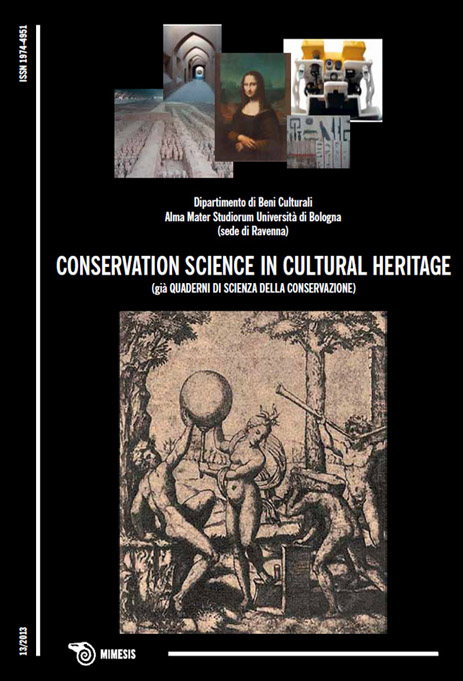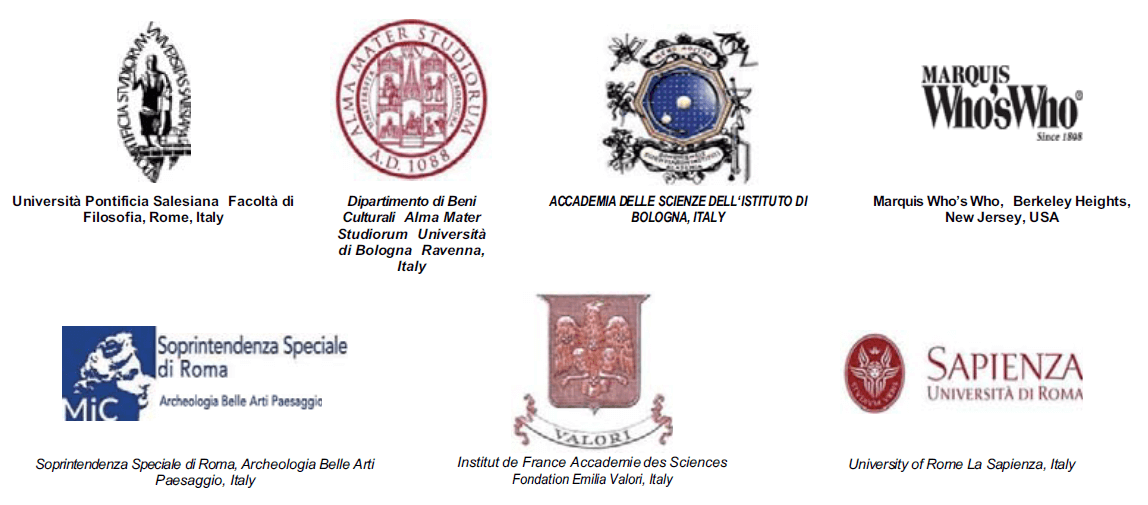The kingdom of Armenia as the last bastion of Hellenism
DOI:
https://doi.org/10.6092/issn.1973-9494/4180Keywords:
tragedy in verse, relevance, ironyAbstract
Summary
The article is devoted to H. Nerzetian’s tragedy in verse "Artavasdes and Cleopatra". The action takes place in the second half of the first century BC, when Armenia, together with Rome and Pathia, was one of the most powerfull empires in the ancient world. The timeline highlighted in the play covers about twenty years. However both the scenic action and the scenic time are only indicated by odd images. The only invention by the author is the encounter between Cleopatra and Artavasdes and remains on the sidelines of the play. Appearing in the foreground are the everlasting philosophical clashes: Duty and Self-love, Integrity and Perfidy, Man and Power, the Fatherland and the World. An extremely important idea it is that man is incapable of discerning either another man or the essential events that take place in the world around him. The characters solve problems that are relevant not only for them but also for the reader. The author often introduces elements of irony and absurdity, that are inherent to the many dialogs in “Artavasdes and Cleopatra”. Clashing intonations in the form of differing times display additional effects.
Riassunto
L’articolo è dedicato alla tragedia in versi scritta da H. Nerzetian "Artavasdes e Cleopatra". L’azione si svolge nella seconda metà del primo secolo a.C., quando l’Armenia, insieme a Roma e Pathia, era uno dei più potenti imperi del mondo antico. La linea temporale sottolineate nell’opera prende circa vent’anni. Tuttavia, sia il tempo che l’azione scenic sono solo indicati da immagini antiche. L’unica invenzione dell’autore è l’incontro tra Cleopatra e Artavasdes e resta ai margini dell’opera. Sullo sfondo si stagliano dilemmi filosofici senza tempo: l’obbligo e l’amor proprio, l’integrità e la perfidia, l’uomo e il potere, la patria e il mondo. Un’idea estremamente importante è che un uomo è incapace di discernere un altro uomo o gli eventi essenziali che accadono nel mondo circostante. I personaggi risolvono problemi che sono importanti non solo per loro ma anche per il lettore. L’autore spesso utilizza l’ironia, l’assurdo, insiti nei molteplici dialoghi tra “Artavasdes e Cleopatra”. Gli scontri di toni nelle forme di tempi diversi mostrano poi effetti aggiuntivi.
Résumé
L’article est consacré à la tragédie en vers écrite par H. Nerzetian « Artavazde et Cléopâtre ». L’action se déroule pendant la deuxième moitié du premier siècle av. J.-C., lorsque l’Arménie, avec Rome etla Parthie, était l’un des empires les plus puissants du monde antique. La ligne temporelle soulignée dans l’œuvre comprend une vingtaine d’années. Cependant, le temps et l’action scénique sont à peine esquissés à l’aide d’images antiques. La seule invention de l’auteur est la rencontre entre Cléopâtre et Artavazde, et elle reste en marge de l’œuvre. C’est sur cette toile de fond que viennent se greffer des dilemmes philosophiques intemporels : l’obligation et l’amour-propre, l’intégrité et la perfidie, l’homme et le pouvoir, la patrie et le monde. L’idée extrêmement importante est qu’un homme est incapable de discerner un autre homme ou les événements essentiels qui se produisent dans le monde environnant. Les personnages résolvent des problèmes qui sont fondamentaux, non seulement pour eux, mais aussi pour le lecteur. L’auteur utilise souvent l’ironie, l’absurde, présents dans les multiples dialogues entre « Artavazde et Cléopâtre ». Les tons s’entrechoquent dans les diverses formes de temps, contribuant à ajouter certains effets.
Zusammenfassung
Der Artikel ist der von H. Nerzetian in Versen verfassten Tragödie „Artavasdes und Kleopatra“ gewidmet. Das Geschehen spielt sich in der zweiten Hälfte des ersten Jahrhunderts v.Chr. ab, als Armenien zusammen mit Rom und Parthien eines der mächtigsten Reiche des Altertums bildete. Der im Werk hervorgehobene Zeitraum umfasst etwa zwanzig Jahre. Sowohl die Zeit als auch die szenische Aktion werden nur durch antike Bilder bestimmt. Die einzige Erfindung des Autors ist das Zusammentreffen zwischen Kleopatra und Artavasdes, das jedoch am Rande des Werkes bleibt. Im Hintergrund zeichnen sich zeitlose philosophische Dilemmata ab: Pflicht und Eigenliebe, Rechtschaffenheit und Heimtücke, Mensch und Macht, Vaterland und Welt. Eine äußerst wichtige Idee ist die, dass der Mensch nicht fähig ist, einen anderen Menschen oder die wesentlichen Ereignisse zu unterscheiden, die in seiner Umwelt geschehen. Die Gestalten lösen Probleme, die nicht nur für sie selbst, sondern auch für den Leser wichtig sind. Der Autor greift in den zahlreichen Dialogen zwischen Artavasdes und Kleopatra häufig auf die Ironie, das Absurde zurück. Die Auseinandersetzungen in den Formen unterschiedlicher Zeiten zeigen zusätzliche Effekte auf.
Resumen
El artículo ha sido dedicado a la tragedia en verso escrita por H. Nerzetian "Artavasdes y Cleopatra". La acción se desarrolla en la segunda mitad del siglo I a.C., cuando Armenia, junto con Roma y Parthia, era uno de los imperios más poderosos del mundo antiguo. La línea temporal señalada en la obra abarca alrededor de veinte años. A pesar de ello, tanto el tiempo como la acción escénica se indican solamente con imágenes antiguas. El único invento del autor es el encuentro entre Cleopatra y Artavasdes y se queda al margen de la obra. Como telón de fondo se aprecian dilemas filosóficos eternos: la obligación y el amor propio, la integridad y la perfidia, el hombre y el poder, la patria y el mundo. Una idea extremadamente importante es el hecho de que un hombre es incapaz de discernir a otro hombre o los eventos esenciales que suceden en el mundo que lo rodea. Los personajes solucionan problemas importantes no tan solo para ellos, sino también para el lector. El autor utiliza a menudo la ironía y el absurdo, ínsitos en los numerosos diálogos entre "Artavasdes y Cleopatra". Los enfrentamientos de tonos bajo la forma de distintos tiempos muestran efectos adicionales.
Резюме
Статья посвящается трегедии в стихах «Артавазд и Клеопатра», написанной О. Нерзетяном. Действие происходит во второй половине первого века до н.э., в то время когда Армения на ряду с Римом и Парфией являлась одной из самых мощных империй античного мира. События, развивающиеся в трагедии, охватывают период около двадцати лет. Несмотря на это, как время, так и действие на сцене определяются только античными образами. Единственным вымыслом автора является встреча Клеопатры и Артавазда, которая остается на втором плане произведения. На фоне трагедии выделяются вечные философские дилеммы: долг и чувство собственного достоинства, честность и коварство, человек и власть, Родина и мир. Очень важной является идея, что человек не в состоянии распознать другого человека или основные события, происходящие в окружающем его мире. Персонажи решают проблемы важные не только для них, но и для читателя также. Автор часто использует иронию, абсурд в многочисленных диалогах. Столкновение тонов различных временных форм придает добавочные эффекты.
摘要
该文章介绍H. Nerzetian作家写的 "Artavasdes e Cleopatra (阿尔塔瓦兹德和克娄巴特拉)"由诗组成的悲剧.
该悲剧讲述了一件发生在公元前一世纪下半叶的事情,当时亚美尼亚和罗马、帕提亚一起是古老世界强大帝国之一。悲剧强调的时间段是大约二十年。时间和舞台的情节不过只是通过古老的形象而传达。
作家的唯一创作是克娄巴特拉和阿尔塔瓦兹德的相遇,但是却停留在悲剧情节的边缘。
在这种背景下凸显出永恒的哲学困境:责任与自爱,正直与背信弃义,人与权力,国家与世界。一个极为重要的想法是人无法了解其他人或周围世界发生的基本事情。悲剧人物解决的问题不仅对他们而且对读者也很重要。作者经常通过"阿尔塔瓦兹德和克娄巴特拉"的对话体现讽刺,荒诞。不同时态下的色调争斗表现了附加效果。
References
STRABO, The Geography, XI, pp. 13,14
PLUTARCH, Parallel Lives, cap. XIX , XXII, XXXIII, XXXVII, XXXVIII, L
FLAVIUS JOSEPHUS, The Jewish War or Judean War, I
GAIUS CORNELIUS TACITUS, Histories, II
Downloads
Published
How to Cite
Issue
Section
License
Copyright (c) 2013 Georgi Koubatian
Copyrights and publishing rights of all the texts on this journal belong to the respective authors without restrictions. Authors grant the journal right of first publication.
This journal is licensed under a Creative Commons Attribution 4.0 International License (full legal code).
See also our Open Access Policy.






